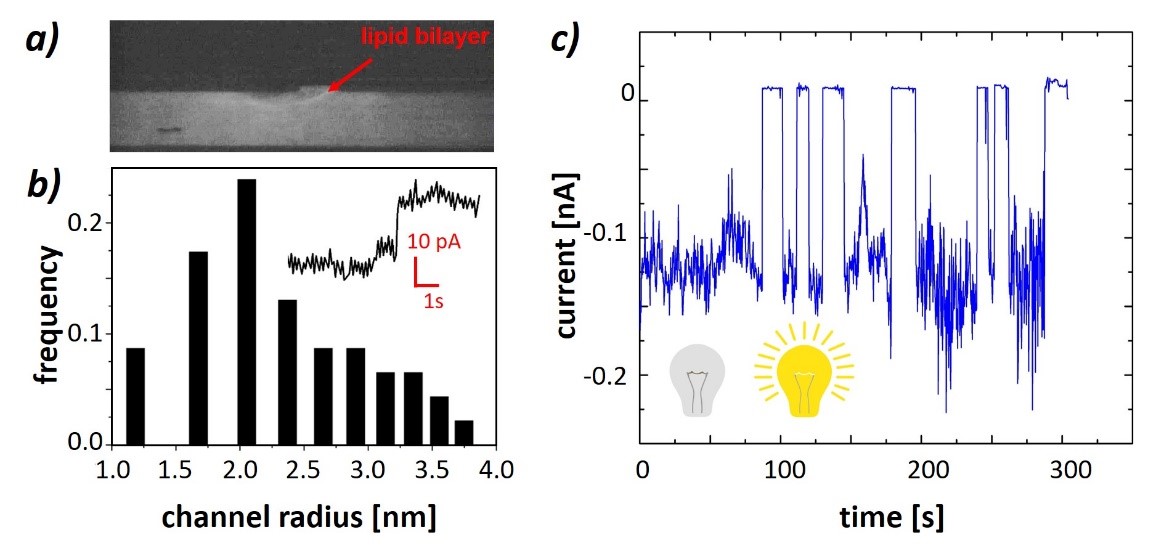AG Prof. Dr. Ralf Seemann
| |
|
In the previous years, we developed and optimized a microfluidic platform that enables fabrication of lipid bilayers and testing their properties. This microfluidic platform is used to reconstitute proteins into a model membrane and to realize an artificial cascade signaling.
Together with our colleague Albrecht Ott (Experimental Physics) we produce photo-sensible bacterial rhodopsin protein (Archaerhodopsin-3) via a cell-free expression system and injected these proteins around a bilayer that is fabricated in a microfluidic setup. Using this strategy functional ion channels can be inserted in a bilayer as can be demonstrated by measuring electrical conductivity. Interestingly, an impressive and reversible protein conductivity is observed when exposing the bilayer to light (λ≈ 530 nm) (Fig. 1a-c).

Group members on this project: Dr. Jean-Baptiste Fleury, Navid Khangoli, Prof. Dr. Ralf Seemann
Internal collaborations: Albrecht Ott (Saarland University, Experimental Physics)
Funding: